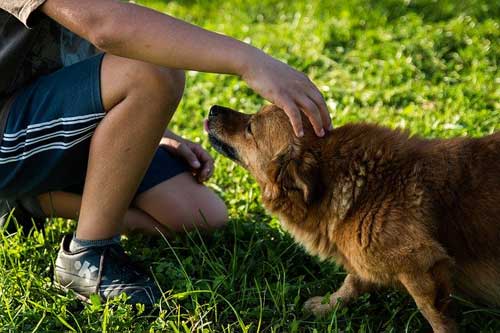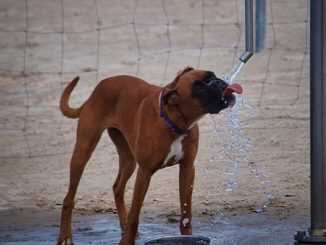General introduction
Rabies is a disease which present on all continents and endemic in most African and Asian countries, is a fatal zoonotic viral disease, transmitted to humans through contact (mainly bites and scratches) with infected animals, both domestic and wild. Rabies is estimated to cause at least 55000 deaths per year worldwide, about 56% of which occur in Asia and 44% in Africa, particularly in rural areas on both continents. In Africa and Asia, these deaths are responsible for 1.7 million disability-adjusted life years lost each year. The estimated annual cost of Rabies is million rupees, most of this cost being borne by Asian countries where large amounts of post exposure prophylaxis are administered. An estimated 10 million people worldwide receive post-exposure treatment after being exposed to animals suspected of Rabies.
Causal agent and main modes of transmission
Causal agent: Lyssaviruses of the Rhabdoviridae
Main modes of transmission: Hosts are usually Canidae, including dogs (responsible for more than 99% of all human deaths from Rabies), foxes, coyotes, wolves and jackals; also cats, skunks, raccoons, mongooses, bats and other biting animals. A bite or a scratch introduces virus-laden saliva from a rabid animal. The incubation period ranges from a few days to several years (most commonly 3-8 weeks).

Clinical description
Clinical description Paresis or paralysis, delirium, convulsions. Without medical attention, death in about 6 days, usually caused by respiratory paralysis.
Clinical case definition: a person presenting with an acute neurological syndrome (encephalitis) dominated by forms of hyperactivity (furious Rabies) or paralytic syndromes (dumb Rabies) progressing towards coma and death, usually by respiratory failure, within 7-10 days after the first symptom if no intensive care is instituted.
Control activities of Rabies disease in India
Case management of bitten patients Immediate and thorough cleaning of the wound with soap, followed by ethanol or aqueous iodine. Post exposure prophylaxis (PEP) if required: administration of Rabies immunoglobulin in case of severe exposure. . PEP to be applied as soon as possible – vaccines with a potency at least 2.5 IU per single immunizing intramuscular dose according to one of the following schedules: (Volume of 1 intramuscular dose after reconstitution)
Intramuscular schedules: 1 dose on days 0, 3, 7, 14 and 28. All intramuscular injections to be given into deltoid region or anterolateral area of thigh muscle in small children. Never inject the vaccine in the gluteal region.
2-1-1 Regimen: 2 doses on day 0 (one in the deltoid region of the right arm and the other in the deltoid region of the left arm). 1 dose in the deltoid region on day 7 and 1 on day 21. This regimen is particularly recommended when no immunoglobulin is required, i.e. When contact consists in nibbling of uncovered skin, minor scratches or abrasions without bleeding, or licks on broken skin.
Intradermal schedules: The following intradermal regimens have been shown to be immunogenic: 2-site intradermal method (2-2-2-0-1-1 and 2-2-2-0-2) for use with purified vero cell vaccine (PVRV), purified primary chick embryo cell vaccine and human diploid cell at 0.1 ml per intradermal injection site – days 0, 3 and 7: 0.1 ml at each of 2 sites, intradermal on upper arm, over each deltoid. Days 28 and 90: 0.1 ml at 1 site, on upper arm. Inject intradermal over deltoid, lateral thigh, superscalar region and lower quadrant of the abdomen. Day 7: 0.1 ml of vaccine at each of 4 sites over deltoids and thighs. Days 28 and 90: 0.1 ml of vaccine at 1 site, over deltoid. Intradermal injections must be given by staff trained in this technique.
Vaccine vials to be stored between 2 ºC and 8 ºC after reconstitution and total content to be used as soon as possible, at least within 8 hours. Rabies vaccines formulated with an adjuvant should not be administered intradermal. The standard dose per id injection site is 0.1 ml. It should be noted however that the volume of one single immunizing intramuscular dose after reconstitution may vary according to vaccine brand.
Prevention and management of Rabies
There is no specific treatment for Rabies, which is a fatal disease. In India preventive measures promotes: human Rabies prevention through: well-targeted post exposure treatment using modern vaccine types and, when appropriate, anti-rabies immunoglobulin; pre-exposure prophylaxis using modern vaccine types for certain professional groups at higher risk and also if vaccines are easily accessible, of children aged under 15 in areas where Rabies is hyperendemic; increased access of safe and effective Rabies vaccines. Dog Rabies elimination through mass vaccination of dogs and dog population management. Immunize all dogs and cats owned by an individual or by the community and reduce the size of the ownerless dog population by reproduction control, reduction of the carrying capacity of the environment and law enforcement when needed. Immunize any person with proven or probable exposure to Rabies and administer Rabies immunoglobulin in case of severe exposure. Humans at high risk (e.g. laboratory personnel, professions at high risk) must receive pre-exposure immunization: 3 injections of an intramuscular dose on days 0, 7, and 28.
Pre-exposure vaccine regimen: 1 dose of a cell culture or purified duck embryo vaccine on days 0, 7, 28. A variation of a few days is acceptable. The dose is 1 standard intramuscular dose (1 ml or 0.5 ml according to vaccine type). Vaccine may be given intradermal (0.1 ml on days 0, 7, 28) but intramuscular injections are preferable if antimalarial chemoprophylaxis (e.g. Chloroquine) is being used concurrently or there is a possibility of an immune-compromised state (antibody response may be impaired if the intradermal method is used).
Epidemics Conditions
Under which epidemics may occur. Introduction of the virus into a Rabies-free area with a fully susceptible animal population. Affected areas where the dog/human population ratio is high, with little dog supervision and immunization. Affected areas with animal outbreaks where no human Rabies vaccines/immunoglobulin are available.
Management of epidemics
If an epidemic arises from a new introduction at one site, intensive vaccination of dogs in combination with dog. Population control and movement restriction to be implemented immediately. Public health authorities, particularly in isolated Rabies-free area communities, should have a contingency plan for such an event.
In Animals
Undertake a dog immunization campaign: 75% of the dog population must be vaccinated within 1 month. Immunize domestic animals and (through bait) wild animals as appropriate. Enact/ enforce legislation on dog movement restriction. Selective and humane capture and elimination of dogs not in compliance with legislation may be conducted in outbreak situations.
In Humans
Ensure availability of vaccine and immunoglobulin in the affected area. Train medical staff in defining when PEP is needed, categories of exposures and in the use of the intradermal technique. Investigate animal outbreaks and identify human contacts with suspect animals. Immunize any person with proven or probable exposure to Rabies. In humans, Rabies is almost invariably fatal once clinical symptoms have developed. WHO reports around 50 000 Rabies deaths every year, out of which 20 000 are estimated to occur in India alone. Despite potent anti-Rabies vaccines and immunoglobulins available, Rabies is far from control and elimination. An effective strategy for control of Rabies takes into account the epidemiology of animal bites, Rabies and factors influencing post exposure treatment. Hence it becomes pertinent to review the current status of Rabies and strategies for its control in the country. The other important preventive measures like Animal Birth Control (ABC) and vaccination of dogs has also been highlighted. It is emphasized that Rabies should be recognized as priority public health problem and cell culture vaccines should be made available free of cost at all government health facilities. Other important measures include generation of awareness about Rabies and first aid of animal.
- Washing wounds thoroughly with soap and water after a bite is an effective way of preventing infection, while both pre-exposure and post-exposure vaccinations for humans exist. Global elimination of the disease is feasible through mass vaccinations of dogs, which transmit 95% of Rabies cases to humans. In India Rabies is still notifiable Canine vaccination is the suggested strategy of choice towards elimination of Rabies. In, India, eliminating a single-host disease such as polio has been logistically challenging and vaccination coverage is still less than 60% in many large states. Eliminating Rabies by vaccinating the entire canine population is understandably a low priority for most decision-makers in the country.
- We do not have good estimates of transmission of Rabies from dogs to humans and from dogs to cattle. We lack of more reliable information makes it difficult to plan and evaluate the success of any Rabies-control measures. It is difficult to eliminate the Rabies from country like idea, but not impossible researchers and policy-makers need to jointly promote evidence-based policy-making. The landscape of Rabies control is complex; with actors from multiple sectors– including animal welfare, public health, veterinary medicine and civil administration – with different perspectives and expectations of a Rabies control programme. In such an environment simple intervention strategies are not likely to meet the needs of all stakeholders. Instead, an approach that recognizes – while seeking to improve – the interdependence of human, animal and environmental health, may bring multiple perspectives together. More epidemiological studies and implementation research should be conducted with a wider set of actors. For us, the recognition of the complexity of Rabies control is the first step to developing more effective, acceptable and sustainable policy solutions.
|
The content of the articles are accurate and true to the best of the author’s knowledge. It is not meant to substitute for diagnosis, prognosis, treatment, prescription, or formal and individualized advice from a veterinary medical professional. Animals exhibiting signs and symptoms of distress should be seen by a veterinarian immediately. |






Be the first to comment